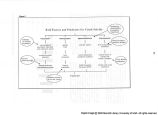| Show Impact Previous cultural competence programs by health services leaders such as the California Department of Mental Health Medi-Cal Kaiser Permanente and Harvard Pilgrim Health Care have enhanced access Specific changes in the California Medicaid managed care market attributable to cultural competence requirements included improved access to translation and interpreters greater community participation in health plan services development greater inclusion of minority health care personnel and creation ofmarket for vendors of linguistic and cultural competence support services Coye 1999 Incentives to comply with the CLAS standards in Utah might be achieved by peer review organizations and community clinical quality improvement initiatives professional associations Medicaid Medicare HMO contracts and performance measurement projects at the state Department of Health and legislative and administrative requirements The public comment period ended in April 2000 and the finalized CLAS standards were published in December 2000 Details are available at online www omhre gov clas Table Recommended Standards for Culturally and Linguistically Appropriate Health Care Services CLAS Based on an analytical review of key laws regulations contracts and standards currently in-use by federal and state agencies and other national organizations these guidelines were developed with input fromnational advisory committee of policymakers providers and researchers In ths report each standard is accompanied by commentary that addresses its relationship to existing laws and standards and offers recommendations for implementation and oversight to providers policymakers and advocates access and respond to health care services Preamble Culture and language have considerable impact on how patients To ensure equal access to quality health care by diverse populations health care organizations and providers should No Promote and support the attitudes behaviors knowledge and skills necessary for staf to work respectfully and effectively with patients and each ather incuturally diverse work environment Havecomprehensive management strategy to address culturally and linguistically appropriate services including strategic goals plans polices procedures and designated staf responsible forimplementation Utiize formal mechanisms for community and consumer involvement in the design and execution of sevice delivery fiaize planning policy making operations evaluation traning and as appropriate treatment planning cuturally competent Develop and implementa strategy to recrut retain and promote quaified diverse and needs of the racial and ethnic administrative clinical and support staf that are trained and qualified to address the communities being served Require and arrange for ongoing education and training for administrative cinical and supportstaffin culturally and linguistically competent service delivery Provide all clients with limited Engiish proficiency LEP access to biingual staffor interpretation services Provide oral and writen notices inclucing translated signs at key points of contact to clents in their primary language informing them of their right to receive interpreter services free of charge Translate and make available signage and commonly-used writien patient educational material and ofher materials for members of the predominant language groupsservice areas receive training that includes the Ensure that interpreters and bilingual staff can demonstrate bilingual proficiency andconcepts relevant to cinical or nonand ethics of interpreting and knowiedge in both languages of the tems and usually lack these abilties they because substittes clinical encounters Family orfriends are not considered adequate the health care 10 Ensure that the clients primary spoken language and sefl-dentiied race ethnicity are included in staff provider by organizationmanagement information system as well as any patient records used 11 Usevariety of methods to collect and utiize accurate demographic cultural epidemiological and ciinical outcomeanddata for racial and ethnic groups in the service area and become informed about the ethnic cultural needs resources assets of the surrounding communtty 12 Undertake ongoing organizational self-assessments of cutural and linguistic competence and integrate measures of access satisfaction qualty and outcomes for GLAS into other organizational intemal audits and performance improvement programs delivery and 13 Develop structures and procedures to address cross-cultural ethical and legal conflcts in health caretreatment or diffculty complaints or grievances by patients and staff about unfair culturally insensitive or iscriminatory in accessing services or denial of services 14 Prepare an annual progress report documenting the organizations progress with implementing CLAS standards including information on programs saffing and resources 135 Digital image 2005 Marriott Library University of Utah Al rights reserved |

















































































































































































